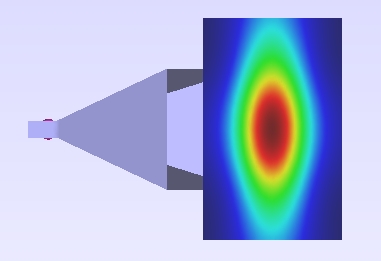hfss near field
How could get it? I have seen HFSS can give data, but over a spere. I would appreciate help. Thanks!.
Franco
p.s.: for those who note it, this is for a simulation for a near field to far field transformation.
Hi fcolleon
firstly select insert near filed setup in the radiation tree and then select sphere
secondly after simulation in the results select near filed data and in the results page you can select any plan you want by its theta and phi(fixed theta or fixed phi)
I hope it'll be helpful
Hi, thanks for the reply, but what i'm looking for is near field data over a plane(not fixed theta or phi). Supose the antenna is an aperture in xy plane. What i need is near field data over a xy plane(a plane z=d, if z axis of propagation, and d distance antenna-plane).
anyone? i think it would be very useful to know how to do this, because you can simulate a planar near field scan if you have the field data over a plane, making holography, etc.
You can do this in EMC Studio:

more info:
Horn Antenna Example
thanks, i will check out. Anyway, it seems nobody knows how to do this in HFSS? I think simulations of planar near field should be very common, i had expected to have a lot of answers! :(
There can be some ways to analyze the near field of the antenna in HFSS, but still its kinda tricky thing to deal with. The first way can be the one as mentioned by ali110.
But in your case what you can do is make a large sheet(vacuum type) infront of the antenna's propagating path at some distance and then select the sheet>>right click on it>>>select plot fields>>and then select the complexMag_E or Mag_E, whateva u want...You can do the same thing to get the H field.
Then simulate it and you will get the E and H fields at that instance....but, the only bad thing in this approach is that it can be time consuming at times when you have to know about multiple distances (simulating again and again :(
Hey fcolloen, did you figure out how to find the E and H fields over an aperture near to the antenna in HFSS? Let me know if you have anything concrete. Thanks in advance!
Hey fcolloen, did u get d solution for ur problem?
if yes please share how to do it because i have to do the same with dipole antenna.
thanks in advance....
Sorry, I have made a wrong statement.
